#arthrogryposis parent
Explore tagged Tumblr posts
Text
Always Answering the Hardest Question
Throughout this journey, I’ve learned many things. How to change diapers while working around various casts, the benefits of owning a Giraffe Bottle, and new terms such as torticollis, nemaline myopathy, and apraxia. I’ve also learned that people will ask awkward questions when faced with awkward situations. I fully admit that asking how our son is doing, even now, can be an awkward question…
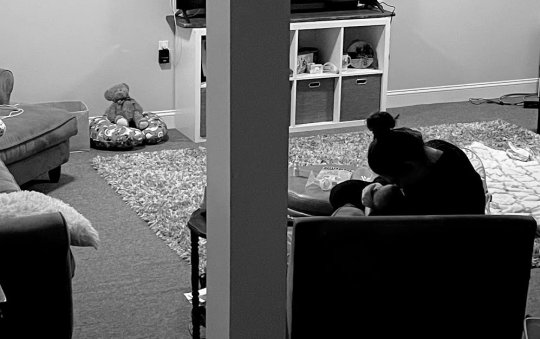
View On WordPress
0 notes
Note
Dasha Trickster: a young lady who's just like everyone else. Except she has a very rare disability. Arthrogryposis: a disability that primarily affects the joints by dislocation and bone formation. Side effects include the clubbing of hands and feet and unique muscle dystrophy in the limbs. For Dasha, she was born with no hip sockets, with the hip bones appearing to use the surrounding tendons as a makeshift. A very, very rare effect of Arthrogryposis. She has no arm muscles, clubbed hands, and feet that were flipped inward but were worked on with surgery when she was still a baby.
When all was said and done, the doctors told her parents that she will never walk, she will never write, she will never be able to do anything a person is capable of doing.
And they were ALL WRONG!!! TAKE THAT MUTHERFUCKAS!!!!! Through sheer determination, and jealousy at her little brother walking before her, Dasha was able to take her first steps ever! And it only gets better.
She could soon write, read, and eventually head off to school. Where she was able to thrive socially mostly, but also academically!
However, as she grew, her walking was painfully affecting her physical health, due to her lack of hip sockets. And with that, she was disuaded from most physical activities. But, there's one passion that nothing will ever turn her back on:
ACTING!!!!!!
Yes, our young protagonist has a knack for acting! Any type of acting works for her.
As a matter of fact, she was on her way over to audition for her school's production of "The Wiz"...
Until that giant hole appeared, and she fell in.
Dasha: And now I'm here!
--TKA
Leona: ...
Yuu: ...
Both: Holy shit.
7 notes
·
View notes
Text
Blogging with More Honesty
Blogging with More Honesty
Our latest visit to Shriners Children’s in Greenville, SC was last week. As I always do, I wrote my blog post covering the visit over on The Greene Affect. Since the beginning, I’ve tried to be uplifting and playful with these posts. I entitle the entire series Greene does Greenville, which is followed by a subtitle. Last year I tried to maintain a feel of movie titles and movie sequels. So far…

View On WordPress
#amc dad#amc parent#amc strong#arthrogryposis#arthrogryposis dad#arthrogryposis father#arthrogryposis parent#greenville#shriners childrens
2 notes
·
View notes
Text
HELP A MOTHER IN THE PHILIPPINES SAVE HER DISABLED INFANT SON!
Update 2/22: PayPal has blocked Jing. She had nearly 13,000 pesos in donations in her account which will not be accessible to her for 180 days. Please donate to her AirFunding to help her with Kyle. He has improved and was able to come off the vent, but is still in the hospital. This fundraiser has helped so much, but with almost all of the money that hadn’t been spent on hold, Kyle is in peril.
Update 2/17: Jing messaged me on Facebook this morning and let me know Kyle was able to undergo a CT scan thanks to the donations generated from this post! This wouldn’t have been possible without your support. So far we have raised 6,208 Philippine pesos for Kyle. Keep reblogging and donating when you can, please. Every little bit helps.
Jing Lee’s 1 and a half month old son, Kyle, was born with Arthrogryposis Multiplex Congenita, a disability which involves joint contractures. Kyle recently got sick with severe pneumonia and had to go to the hospital. He was put in intensive care and intubated. Now, Jing has exhausted her savings and is out of money to pay for Kyle’s life-saving medications, including antibiotics. She has looked to disability organizations for help but the process of securing funding will take too long to help her and her baby. The medicine costs about 10 - 15,000 Philippine pesos a day, which is 208-312 United States Dollars.
Here is Kyle and Jing before he became ill.

[Image Description: A young woman and her baby smile at the camera while they take a selfie together.]
Here is Kyle in the hospital. (Trigger Warning: Blood, Medical Setting, intubation)

[Image Description: A baby in a hospital bed attached to various medical devices, including an IV and breathing tube.]
I met Jing through a Facebook group for Arthrogryposis, my and Kyle’s disability. I was advertising for my own small advocacy group on there, so she requested to join mine looking for support. My group is mostly poor college kids, so I knew we wouldn’t be much help. Instead I made this post on tumblr hoping she could get donations. I’ve been talking with her for several days now, and she’s a wonderful person. She and I are working so hard to get the word out about Kyle, and I beg you to help in any way you can.
If you have questions about the legitimacy of this post, please feel free to comment or message me directly. I can post screenshots of my conversations with Jing or provide whatever proof you need to donate. This is too important to let skepticism deter people from contributing!
🛑Do Not Scroll Past This Without At Least Reblogging!🛑
To help save Kyle, donate to Jing Lee’s AirFunding:
AirFunding: https://www.airfunding.net/s/74149771-6e81-4e0a-8d6b-06b85f802155
#disability#disability rights#disabled poc#signal boost#fundraiser#medical care#philippines#disability resources#disability justice#please help#arthrogryposis#parenting#support needed#donate#direct action#mutual aid#medical aid
1K notes
·
View notes
Text
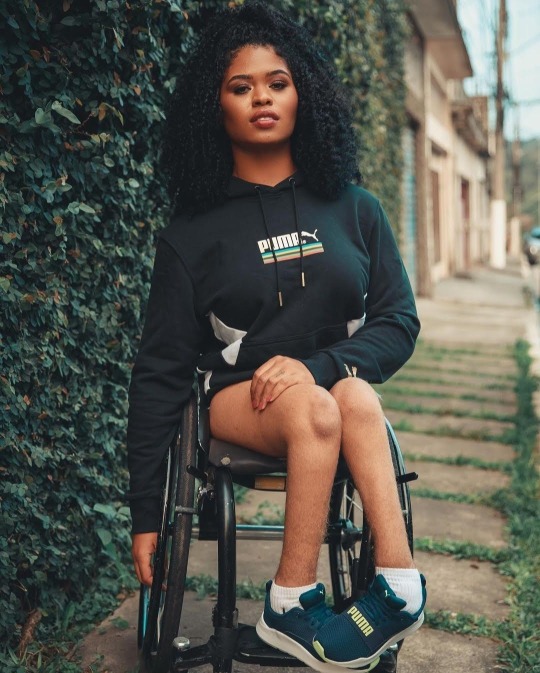

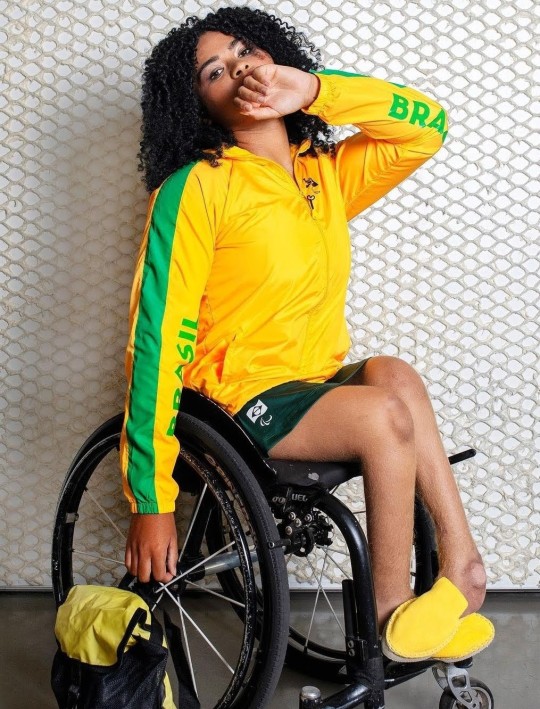
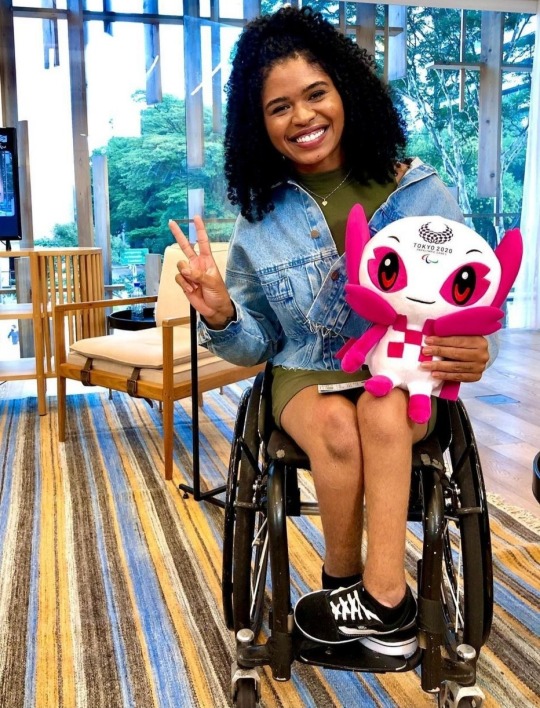
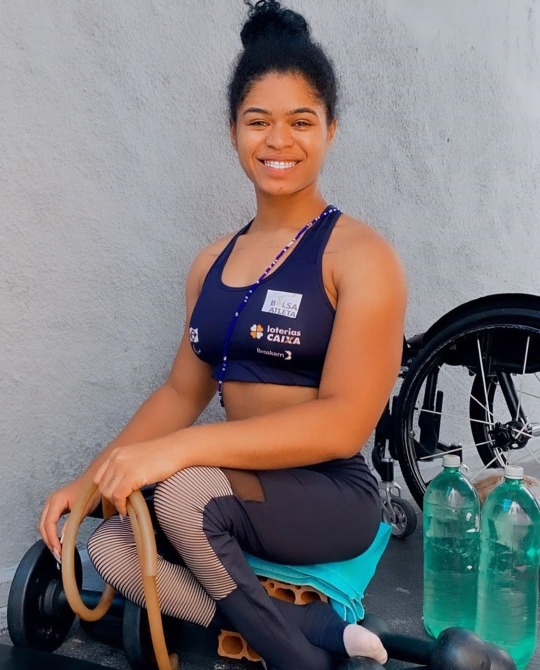
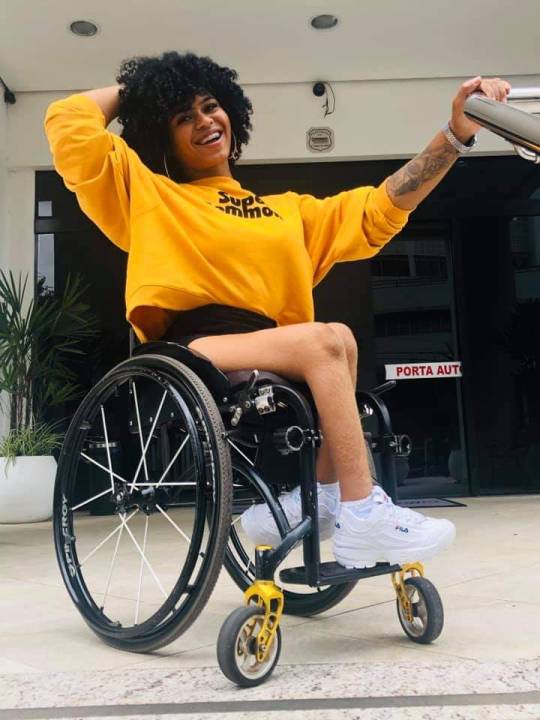
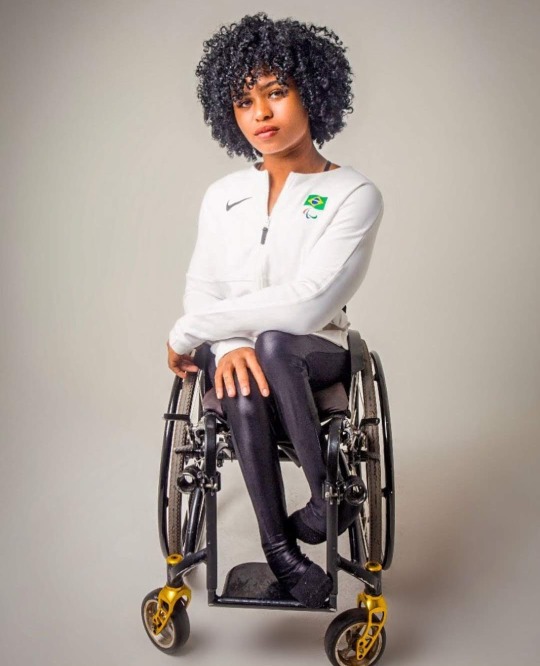
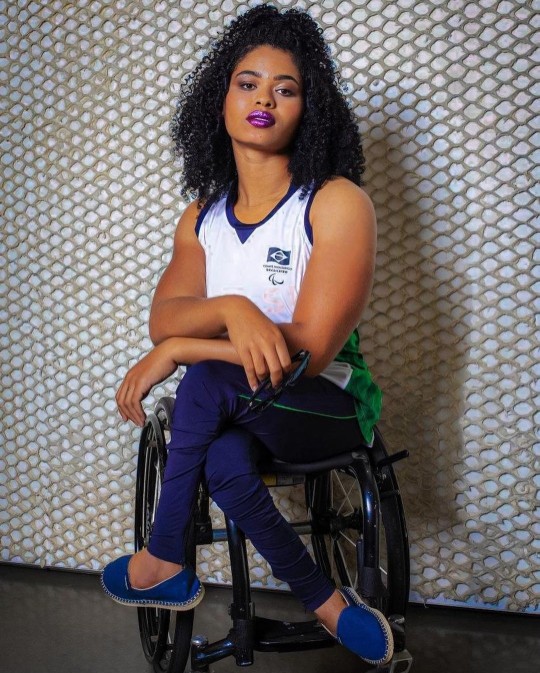

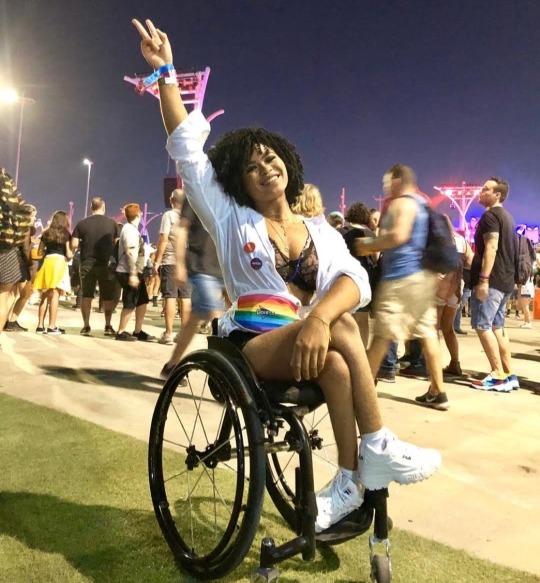
Raissa Rocha Machado is an amazing, 25 year old track and field athlete from Salvador, the capital of the Brazilian state of Bahia.
Raissa has been a wheelchair user for all her life because of Arthrogryposis Multiplex Congenita(AMC). This is a congenital condition which causes joint contractures, stiffness and muscle weakness in some or all of one’s limbs. Fortunately, only Raissa’s lower limbs were affected, albeit in a pretty serious manner. She has never been able to use her legs in any way and also has some slight malformations in both her feet.
In her early childhood, Raissa didn’t accept herself because of her condition and felt excluded from her classmates.
When Raissa was 11 years old, her mother and her teacher encouraged her to try out gymnastics and wheelchair dancing. At first, this was quite a challenge for her, but as time grew on, she started to like it more and more.
At the age of 13, Raissa started to practice athletics. This proved to be exactly what she wanted with her life. She even turned out to have a huge talent, especially for the javelin throw. Furthermore, her parents, teachers and classmates did a tremendous job in supporting her! She started to compete more and more in some smaller regional tournaments and at age 15, she played her first major tournament; the Brazilian Championships in São Paulo.
Raissa has booked some major successes in the previous years. In 2015, she won a bronze medal in the Parapan-American Games in Toronto. In 2016, she competed in the Paralympic Games in Rio de Janeiro, and in 2019, she won the gold medal at the Parapan-American Games in Lima! She was also runner-up in the 2015 World Athletics Championship in Doha.
Now, Raissa has been selected to represent her country at the 2020 Paralympic Games in Tokyo, which will start in just a few weeks. Good luck Raissa!
If you’d like, you can visit Raissa on Instagram or you can check out her Facebook page by clicking the link down below!
#Wheelchair#Wheelchair sports#Wheelchair athlete#Adaptive athlete#Adaptive sports#Parasports#Sports#Athlete#Athletics#Track and field#Wheelchair track and field#Javelin#Javelin throw#Paralympic Games#Paralympics#Rio de Janeiro#Tokyo#Tokyo 2020#Disability#Arthrogryposis#Arthrogryposis Multiplex Congenita#Paraplegia#Paralysed#Legs#Joint contractures#Malformations#Wheelchair user#Salvador#Bahia#Brazil
172 notes
·
View notes
Text
Congenital Clubfoot: Symptoms And Causes
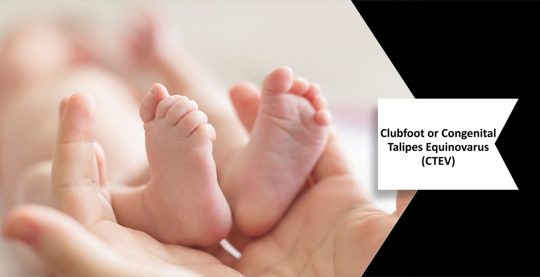
Clubfoot is one of the most common birth defects of the foot. Out of one thousand new-born babies, one to two have this deformity. This deformity affects a new-born’s muscles, tendons, and blood vessels. It is caused when the tissues that connect the muscles to the bone are not the usual size. In congenital clubfoot, one or both feet are rotated downward and inward. It is also known as congenital talipes equinovarus in medical terms, and the child born with this deformity can’t place their foot flat on the ground for walking. Clubfoot is not painful, but if this congenital disease is not treated on time, the foot will remain deformed forever. Mostly, clubfoot can be treated without surgery, but in severe cases, follow-up surgery is required later on.
Types of Clubfoot
Clubfoot can be divided into two major categories non-isolated clubfoot and Isolated (idiopathic) clubfoot. Isolated clubfoot is a common musculoskeletal birth defect. It generally occurs without any other medical problems. On the other hand, non-isolated clubfoot happens along with other serious medical problems, including arthrogryposis and spina bifida. Arthrogryposis is a joint problem, and spina bifida is a neural tube disorder. If anyone in your family has clubfoot, your baby will be at higher risk of congenital clubfoot. Also, boys are at a greater risk of developing clubfoot than girls. Babies also have a higher chance of developing clubfoot if they have another birth defect known as spina bifida. Women who had oligohydramnios during pregnancy are also at a higher risk of having a clubfoot baby.
Symptoms of Congenital Clubfoot
If your new-born baby has clubfoot, their foot will be twisted inward and downward. The affected foot or leg will also be slightly shorter. In some cases, the foot is so severely turned that it seems as if it is upside down. Clubfoot is a serious health concern that will not improve on its own without any treatment. A baby with untreated clubfoot will use the outer edge of their foot to walk, leading to painful calluses. But with proper treatment, clubfoot can be treated, and your baby can lead a normal life.
How can clubfoot affect your baby
Clubfoot will not affect your baby until your child starts to walk. Untreated club food can limit your baby’s daily activities. They might have difficulty walking, standing, and wearing their shoes. A child with clubfoot may walk on the top and side of their feet. Clubfoot can also lead to calluses which is a thick layer of skin that usually develops on the foot’s sole. It can also lead to arthritis, a disease that causes stiffness and painful inflammation of the joints.
Causes of clubfoot
The definite cause of clubfoot has still not been identified by the researchers. But according to a popular theory, clubfoot is caused due to environmental and genetic factors. Families with a history of clubfeet are at higher risk of this disease. If a pregnant woman has one child with clubfoot, their chance of having a second child with this deformity is 1 in 35. In some cases, clubfoot is also linked to spina bifida, a congenital deformity that mostly occurs when the spinal cord and spine have not formed properly. Sometimes it can be linked to a developmental dysplasia of the hip or a developmental hip condition called hip dysplasia. If one of the parents has clubfoot, there is a 1 in 30 chance that your baby will have it. In 20016, research was conducted in which it was shown for the first time that a gene variation that processes folate in the body might be the cause of clubfoot.
2 notes
·
View notes
Text
Clubfoot And its Treatment

Questions and Answers about Clubfoot and its treatment….
Club foot is common, affecting around 150,000 children worldwide every year – but it can be treated.
What is a club foot? Club foot is a congenital abnormality of the foot with a combination of deformities like equinus and varus, adduction and cavus. There are lots of different types of club feet related to various medical problems. Club feet are also seen in neurologic or in some musculoskeletal disorders, e.g. cerebral palsy, spina bifida, arthrogryposis multiplex congenital and others.
Is it common among newborn in the UAE? The most common club foot is the idiopathic club foot which has an incidence of about one to three per 1,000 births. More girls than boys are born with club feet and in about 25 to 50 percent of affected children the club feet are bilateral.
What is the reason for a clubfoot? Genetic factors and environmental influences during pregnancy might play a role in the development of congenital club foot. There is not a single gene which is responsible for the development of club feet but several genes. Families with a history of club feet have a higher risk to have children with club feet, than families without any history.
The risk is particularly high if both the parents have club feet. These club feet are generally more severe than the sporadic idiopathic club feet.
Would a parent see it straight away? Usually, most parents can see the deformity directly after birth as the feet are positioned inward, rotated and plantar flexed, and the mobility of the foot is restricted.
If parents are worried about the foot alignment after birth it is recommended to see a paediatric orthopaedic doctor to evaluate the deformity at the same time a general orthopaedic check-up can be done. Nurses and doctors are trained to see deformities and will guide the families to a paediatric orthopaedic doctor for evaluation.
Generally it is always recommended to do a hip screening (with ultrasound) at the age of four to six weeks to rule out other musculoskeletal problems like developmental dysplasia of the hip. In case of a clubfoot deformity this hip screening should be done before starting to treat the foot.
Can the clubfoot deformity be cured? A club foot can be treated and cured by somebody who is experienced in musculoskeletal problems. The golden standard in club foot treatment is Ponseti Treatment. This method is a non-surgical treatment for correcting club foot. It involves three phases: four to eight weeks of weekly casting, a tenotomy (cutting of the Achilles tendon), which is performed in the clinic, and thereafter cast treatment followed by special shoes connected by a bar.
What is involved in curing it? Is the procedure painful for the baby? The initial casting procedure is not at all painful for the child. After the initial castings the child undergoes a minor office procedure (tenotomy) done with local anaesthesia. Then a final cast is applied for three weeks. Thus, a baby who is treated from birth will have completed all casting by the age of three months.
When the last cast is removed after the tenotomy, the shoes and bar are applied. The child wears them day and night for four months. After the fourth month they switch to a “night time and nap time only” protocol and wear the shoes and bar only at night and nap time 14-16 hours per day until the age of four.
CONCLUSION: The Ponseti treatment is not painful and will be done with gentle manipulation by a specially trained pediatric orthopaedic surgeon. Usually outcomes in Ponseti clubfoot treatment are excellent if done properly by doctor and the affected family.
3 notes
·
View notes
Text
Reflecting Back on Shariners Children's 58-Mile Challenge
If you had told me on February 1st that not only would I complete a 58-mile challenge, but that I would double the number of miles and record just over 117 miles by February 29th, I would have genuinely bellied-laughed at you. Yet, when the clock struck midnight on March 1st, that’s what I had accomplished. Between the treadmill, elliptical, and a lot of stationary bike, I recorded 117.04 miles…

View On WordPress
0 notes
Text
Firstly, Fred Trump was probably not a great dad.
He was shrewd, racially motivated not to rent his apartments to minorities. Probably a rent hiking slum lord. Etc.
Which factually is the history of their business and is legally documented. They skirted laws to help themselves while holding others back. And got away with it.
But Mocking your own father while he's losing his marbles? The guy who gave you a 'small' loan of a million dollars? The one who saw you as the favorite son?
For a guy like Trump to pretend he's a saint and thinks he's a savior, and sees himself as a living martyr.
And whatever else you think you'd like to tack onto it since being elected. The list is endless.
That's pretty disgusting.
Especially if he plays up being this family man. Being part of the Trump legacy. All that.
You could be racist, bigot, cheating other people, a fucking murderer even, but your own family, specifically your nuclear family. One's that he purports are the reason he's the best, made him who he is - All that!?
If he has a high opinion of his family, and his parents, why would you mock them in their confused and dying years?
So that means EITHER he really doesn't have these good and holy views of his father and mother OR he's a truly awful sociopath. (Or both).
---
I guess I have "Strong beliefs, but they're loosely held". Because I can always change my views. They're not part of my identity.
But for every instance of disproving the consensus that Trump is a madman and an incredible asshole, and stupid incompetent idiot.
I find nothing, not one shred of evidence to support that he's just a misunderstood blowhard. Or some hard businessman who's going to do the unprecedented in helping the citizens of this country live better, more prosperous lives fit the 4 to hopefully not 8 years he's in office.
This is just a defining example of how cruel and disgusting and surface charming he is. The opposite of his portrayal of himself.
Makes me pretty sick.
Trump always had the money to take care of his family or parents in their declining Alzheimer's years. They'd never have to go to a nursing home, to be neglected, he didn't have to be hands on at all with them if he chose. Just send nurses and doctors and caretakers to be with them.
So why mock his father cruelly of the involuntary loss of his mind?
Because Donald Trump thinks he's powerful, and he's mocked those he perceived as weak dozens of times from before he even ran as president.
Ugliest example is when he publicly mocked reporter Serge Kovaleski who suffers from arthrogryposis.
So just imagine what he said or did to his own father outside of the public eye in those years.
He's so religious, I'm sure he's heard of the 10 commandments, or maybe seen the movie?
"Honour thy father and thy mother"
I not nearly as "godly and religious" as Trump pretends to be, but I put a lot of what's left of my extinct faith into that commandant.
#Donald Trump#Fred Trump#Memoir#45th president#the president of the united states of america#Trump tower#Alzheimer's#alzheimer's disease#Honour thy father and thy mother#religion
2 notes
·
View notes
Text
More N.L. parents speaking out following 'discriminatory' daycare dismissals for kids with exceptionalities
Lindsay Chafe and Selian Dixon both have daughters with arthrogryposis, and say they've been battling discrimination when it comes to finding services like childcare, after school programs and summer camps.
from CBC | Newfoundland and Labrador News https://ift.tt/2f4oGwL
0 notes
Text
6 Helpful & Informative Blogs for Families Living With Disability
It’s delicate to understand how it feels to live with a disability, or to be parent of a child with one. The term disability and everything that comes with it, is no longer rumored about in quiet corners. With the internet exploding, so are thousands of blogs and web runners working to educate, endorse for andde-marginalise people living with disability. Then's a list of the 6 stylish blogs to follow covering everything from particular experience and politics to community and trip.
Parker Myles
Kat, a mama of two, only discovered her son had down pattern in the bearing suite. As a single mum she began Parker Myles, a warm, gash – jerking and hypercritically written blog, on raising children with disabilities. Her blog has featured numerous viral papers and covers everything from particular notes and experience stories, to communication chops, calls for action. Kat’s blog has come an online community, with numerous families reaching out to partake their stories and assignments for raising kiddies with disability.
Have Wheelchair Will Travel
Author of Have Wheelchair Will Travel, understands that travelling the world, and passing different societies is one of the stylish gests life can give you, and explosively believes that disability shouldn't help anyone from this amazing occasion. This blog is gladdening, instructional and filled with tips and tricks for travelling with wheelchairs. With a son diagnosed with cerebral paralysis, Julie and her hubby have been travelling as a family for 22 times. Their gests in trip, both in the US and Australia are each well proved in the blog and the papers cover everything from the stylish airlines, hiring buses, backpacking, tenures and further. When not travelling overseas, Julie and her family blog about weekend passages and jaunts. Covering as numerous wheelchair accessible places around Australia as possible.
Disability Sports Australia
Disability Sports Australia is a government run website with information on the huge variety of disability acclimated sports in Australia. The point covers types of sports available, how they're acclimated for people with disability and where they can be played. It’s a great starting point if you're wanting your child to come involved in social or competitive sports.
Disability Allowing
Disability Thinking is a comprehensive blog about about disability life, ideas, identity, culture and politics. The author, Andrew, is a graduate in history with a Master in Rhetoric and Dispatches studies and is diagnosed with Arthrogryposis. The blog offers great daily reading lists covering a range of motifs related to disability. The author also has a yearly podcast on disability definition in media.
Active Rehab – link removed as no longer working
Active Rehab is devoted to perfecting the Quality of Life of Australia’s impaired citizens. Its blog covers everything from the stylish Apps for hindered children, to improvements in disability availability. The blog aims to educate people on how to deal with a variety of disabilities, alongside ways to get family members with disability active and involved with everyday life.
Wheelchair Travel
Triadic amputee, John, from the united countries who was told trip would be insolvable after his accident in 2012. Now he has flown over half a million country miles since his recovery with no plans to decelerate down. John’s blog provides plenitude of sapience into travelling with disability in America, Asia Pacific, the Middle East, Africa and Europe. Travelling both Solo and with musketeers or family his blog covers the utmost wheelchair accessible metropolises in each mainland. The composition cover motifs similar as disability accessible transport, accommodation and conditioning. John’s blog aims to prepare you with everything you need to know about wheelchair trip, and works tode-marginialise disability trip across the globe.
0 notes
Text
Rare Disease Day - 2022
Rare Disease Day – 2022
Today is Rare Disease Day. Observed yearly, on the last day of February. To help raise awareness for rare diseases and to improve access to treatment and medical representation for individuals with rare diseases and their families. A disease is considered rare in the United States when it affects fewer than 200,000 Americans. Our son falls under this. His Arthrogryposis falls under that…

View On WordPress
#amcawareness#nemalinemyopothyawareness#NMAwareness#rarediseaseday#rarediseasedayawareness#amc parent#arthrogryposis#arthrogryposis awareness#building strength#nemaline awareness#nemaline myopothy#nemaline parent#rare disease day awareness
1 note
·
View note
Text
So, I run a small advocacy group on Facebook for disabled people, and I have a friend in this group who needs help. She is in need of financial help to get medical care for her child who has my disability. She has reached out to organizations but hasn’t had much luck with them. I want to help her but I am inexperienced and she is in the Philippines, which I’m not very familiar with. Does anyone have advice on how she can get an online fundraiser or something like that going? Or information about federal programs or mutual aid organizations?
Thanks!
#disability#disabled poc#fundrasing#disability justice#disability community#disability activism#philippines#mutual aid#medical care#urgent#disability resources#disability rights#parenting#support needed#arthrogryposis
2 notes
·
View notes
Text










Cristian Westemaier Ribera is a great, 18 year old paralympic athlete from Brazil. Despite his young age, he’s already holding the record of best Brazilian athlete in Winter Paralympic history!
Cristian was born in Cerejeiras, a small town in the Brazilian state of Rondônia. At birth, it became apparent that his umbilical cord had remained wrapped around his legs during pregnancy. This left him with Arthrogryposis Multiplex Congenita(AMC), a congenital condition which caused severe joint contractures and stiffness in both his legs. It also left him virtually without any muscle power from his waist down.
While Cristian’s upper body has always been in excellent health, it didn't take long before the muscles in his legs became atrophied. This caused him to gradually lose more and more of the muscle tissue in his legs. While muscle atrophy greatly increases the risk of fractures and can lead to blood flow problems, Cristian underwent many surgeries as a child to correct some of the worst joint contractures and to increase the flexibility in his legs.
Cristian also spent lots of time at physical therapy during his childhood. This was something he really loved, while it involved lots of different sports and brought him into contact with swimming, athletics, capoeira, tennis, bocce and dancing. It soon turned out that Cristian was a gifted swimmer and that he had some tremendous talent for athletics.
Encouraged by his therapist, Cristian eventually started to compete in wheelchair track and field events and soon specialized himself in the field of wheelchair racing.
After watching the 2014 Winter Paralympics in Sochi, Russia, Cristian gained more and more interest in para-skiing. While this was difficult to practice close to home, he found an alternative in para roller-skiing. Supported by his parents and trainers (Leandro Ribela and Taylor Brian) Cristian eventually started travelling to all places possible to train in para-skiing.
In 2018, Cristian won both a bronze and silver medal at the 2018 World Cup in Vuokatti in Finland. That same year, Cristian qualified to compete in the 2018 Paralympic Winter Games in Pyeongchang. Here, he finished 6’th in the men’s 15K race making him the best Brazilian athlete in the history of the Winter Paralympics!
His current ambition is win a medal at the 2022 Paralympic Winter Games in Beijing, China.
If you’d like to know more about, you can visit out his Facebook page by clicking the link down below or you can check out his Instagram page right here!
#Wheelchair#Wheelchair sports#Wheelchair athlete#Adaptive athlete#Adaptive sports#Sports#Athlete#Physical therapy#Swimming#Athletics#Capoeira#Tennis#Dancing#Track and field#Wheelchair racing#Para-skiing#Paralympic games#Paralympics#Brazil#Russia#China#Disability#Arthrogryposis#Arthrogryposis Multiplex Congenita#AMC#Joint contractures#Paraplegia#Atrophy#Muscle atrophy#Wheelchair user
58 notes
·
View notes
Text
#IFTTT#WordPress#Blog#arthrogryposis#Birthday post#Fatherhood Reloaded#happy birthday#special needs parenting#year 3
0 notes
Text
Juniper Publishers- Open Access Journal of Case Studies

Omphalocele-Exstrophy-Imperforate Anus-Spinal Defects (OEIS) Complex: About Two Cases and Review
Authored by Ons Cherif
Abstract
OEIS complex (Omphalocele, Exstrophy of the cloaca or the bladder, Imperforate anus, and Spine abnormalities) is a rare defect, without obvious etiology in most cases. We report two cases of OEIS complex, and we propose to review the different causes, the etiopathogenesis as well as the clinical characteristics of this pathological entity by referring to a recent review of the literature
Keywords: Omphalocele; Exstrophy; Imperforate anus; Spine; Infraumbilical mesenchyme, Cloacal septum; Ultrasonography
Introduction
Omphalocele, exstrophy of cloaca or bladder, imperforate anus and spinal defect (OEIS) complex is a clinical entity first described by Carey et al. [1]. It’s a rare congenital defect. The most recent studies report an incidence of 1/200000 [2] to 1/100000 live births [3].
The OEIS complex is usually sporadic and arises from a single localized defect in the early development of the mesoderm that will later contribute to infraumbilical mesenchyme, cloacal septum, and caudal vertebrae [4]. It has no evident etiology. We propose to analyze the different manifestations of the OEIS complex through two observations and a recent review of literature.
Clinical Cases
Observation 1
Mrs I.J, aged 34, was presented at 32 weeks gestation for obstetric ultrasound. Her pregnancy was spontaneous, with normal unwinding. Ultrasonography of the 3rd trimester showed an omphalocele, a short and narrow thorax, lumbar and sacral vertebral abnormalities associated with myelomeningocele, deformity of the lower limbs with no visualization of the bladder.
A male child was born vaginally at 34 weeks gestational age. The birth weight was 2050g, with normal length and head circumference. Multiple anomalies were present at birth including omphalocele, bladder’s exstrophy, imperforate anus, and empty hemi-scrotums with prominent rugated labioscrotal folds (Figure 1). Facial anomalies were observed, including low set ears, deep set eyes, epicanthal folds, and a flat nasal bridge (Figure 2). A skeletal radiograph of the newborn revealed abnormalities in the development of the sacrum (hypogenesis) and the symphysis pubis (Figure 3).
Observation 2
Mrs. S.T, aged 28, was referred for discovery, on morphological ultrasound at 23 weeks of amenorrhea, of an omphalocele. Ultrasound showed a large omphalocele containing the liver, spleen, gastrointestinal tract and heart. The bladder had not been visualized. The kidneys were normal but there was significant bilateral pelvic-calyx dilatation. The amniotic fluid was in diminished quantity. There was myelomeningocele with abnormalities of the lumbar and sacral vertebrae. Both lower limbs were deformed in equinovarus varus foot. The diagnosis was an OEIS syndrome, and a medical interruption of the pregnancy, after discussion and following parental consent, was practiced.
Discussion
The OEIS complex is, in the majority of cases, sporadic, without evident cause. However, some reported cases had in their family index cases with similar malformations or chromosomal abnormalities such as monosomy 1p36 [5].
The clinical manifestations of OEIS complex documented in literature [2,3,6,7] associate gastrointestinal abnormalities (omphalocele, imperforate anus, duplicated colon or intestine, intestinal malrotation, anal atresia, anteriorly placed anus, fistulas, intestinal atresia), urinary anomalies (cloacal exstrophy, renal agenesis or hypoplastic kidney, pelvic kidney, duplicated collecting system, hydroureter or hydronephrosis), genital abnormalities (ambiguous genitalia, small penis and epispadias, abnormal or absent scrotum, cryptorchidism, hypoplastic labia, widely separated labioscrotal folds, bifid uterus, clitoris and labia minora splayed to one side, bifid clitoris, vaginal remnants, absent uterus, vesico-vaginal or recto-vaginal fistula, hypoplastic fallopian tube), skeletal spine abnormalities (hemivertebrae, sacral anomalies with hypogenesis or segmentation), limb abnormalities (arthrogryposis, syndactyly, thumb hypoplasia, club feet, dysplastic or hypoplastic lower extremity, symphysis pubis diastasis, congenital hip dislocation), and neurologic anomalies (tethered cord, spina bifida, Chiari malformation, hydrocephalus, developmental delay).
An accurate prenatal diagnosis of OEIS complex and associated malformations is important for the detailed counseling of the family as well as appropriate perinatal management by the obstetricians, pediatric surgeons, urologists, neurosurgeons, and neonatologists.
The poor prognosis and disappointing results of postnatal surgical treatment should indicate detailed genetic counseling and good awareness in perinatal management.
Conclusion
Antenatal diagnosis of OEIS complex is so important for family counseling as well as adapted perinatal management by obstetricians, neonatologists, pediatric surgeons, pediatric urologists, pediatric orthopedic surgeons and pediatric neurosurgeons.
For more articles in Juniper Publishers | Open Access Journal of Case Studies please click on: https://juniperpublishers.com/jojcs/index.php
#juniper publishers contact info#Juniper Publishers#Cardio-Thoracic Surgery#General Surgery Genetics#Hospice and Palliative Medicine#Obstetrics and Gynaecology#Transplantation Medicine#Vascular surgery
0 notes